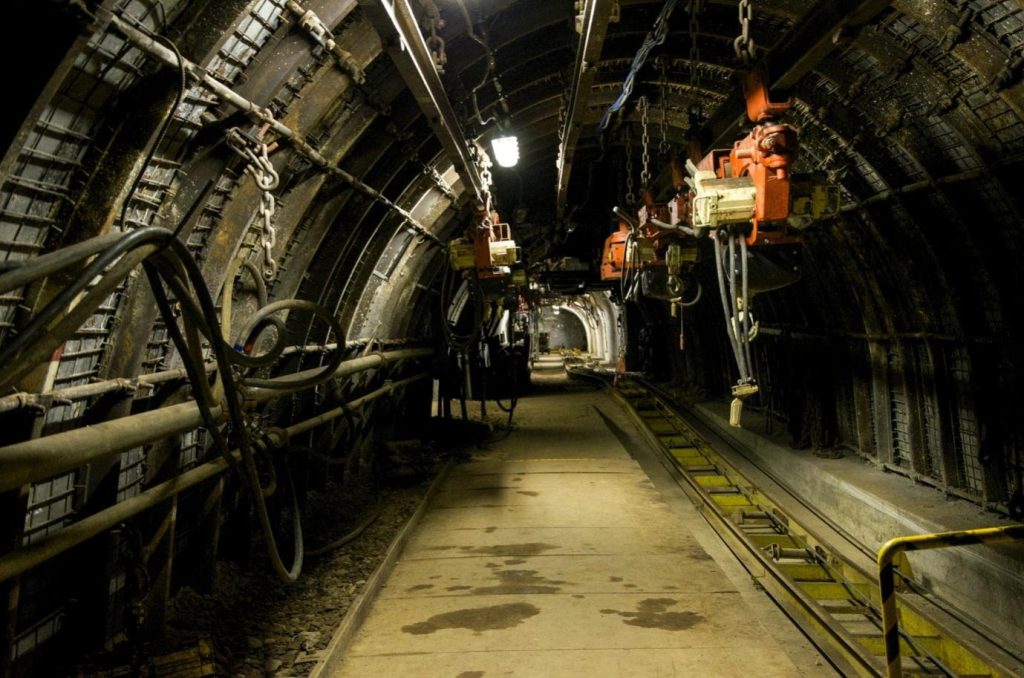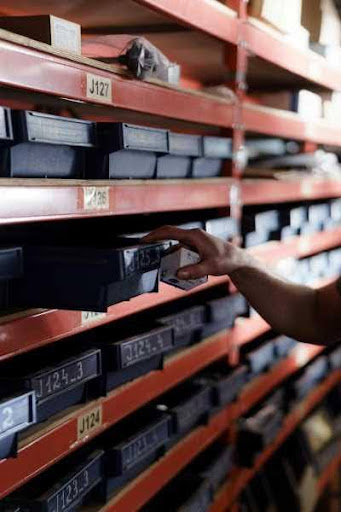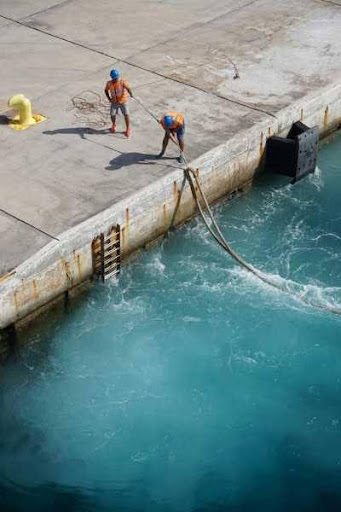
Adult Basic Education & Training, or “ABET” is not only helping mines raise the competencies of low skilled employees to improve productivity and efficiencies but uplifts members of host communities as well. Adult training and adult learning are also important means of strengthening occupational health and safety (OHS) protocol in the mining industry.
Low skilled employees who have basic literacy skills do not understand safety warnings and signs that indicate potential hazards in the workplace. These employees are also not able to read written instructions that have been given to them by their supervisors. Bear in mind those managers are often encouraged to communicate safety measures in writing as it is assumed that workers have a command of basic literacy and basic numbers skills.
How ABET helps literacy in the workplace
Literate workers can read safety information regularly even if it has been communicated to them verbally to help reinforce OHS protocol. There may even be times when low skilled employees do not fully understand what they have been told and must refer to a document afterwards to seek further clarity. Workers with literacy and numeracy skills can assist their colleagues by reading safety signs and documents on their behalf.
Training in basic literacy and basic numbers skills also facilitates effective communication in the workplace. Experiences and ideas can, therefore, be shared more easily between colleagues and managers to assist in making mines safer working spaces for all employees
However, there is still more work that needs to be done to integrate Adult Basic Education & Training into mines ‘standard OHS strategy.
Triple E Training believes that adult training, including basic literacy skills and basic numeracy skills, has the potential of becoming a primary channel for OHS training in the mining industry. This is also in line with the views of many industry experts, who note that the lack of formal education, including basic literacy and maths, among employees, contributes to more accidents, incidents and fatalities. They, therefore, believe that Adult Education & Training, or “AET”, as well as other formal education programmes, make a substantial contribution towards improved OHS performance in the industry.
Industry’s preferred accredited training provider
Triple E Training continues to tailor quality adult learning and adult training strategies for leading mining houses. These learning experiences are geared at meeting various requirements of the Mining Charter, considering the important role that ABET plays in driving transformation. Adult learning and adult training help to develop the competencies of the many low skilled employees who work in the industry. Bear in mind that many of them cannot read and write English and do not understand basic maths. Their lack of basic literacy and basic numeracy skills limits their true potential.
ABET also forms part of a mine’s commitment to continuously develop the competencies of low skilled employees. This will enable them to grow and develop in the industry.
Importantly, it will also assist them in securing employment in other industries after operations have reached the end of their lives. If not appropriately managed, the closure of mining operations can have devastating consequences on the lives of many low skilled employees. According to the Mineral Council of South Africa, every mineworker has at least nine dependants. The desolation caused by mine closures can be witnessed in Welkom, Free State. This mining “ghost town” was once home to a thriving gold mining industry that also supported many secondary sectors.
The reality is that the South African mining industry is still very dependent upon labour that it sources from rural and illiterate communities. This is based on an old migrant system that has its roots firmly entrenched in the country’s early gold mining industry that was built upon cheap unskilled labour. It is now considered a serious blight by the government and the modern mining industry, yet a sustainable solution to the problem is still to be found. Adult training and adult learning have provided a means of helping to lift low skilled employees out of poverty. However, more needs to be done to solve a significant and complex conundrum that continues to impact the lives of so many South Africans. Adult Education & Training cannot do it alone.
AET or ABET for community projects
This leading accredited training provider also continues to help the industry to design and implement community training programmes. These AET or ABET for community projects are geared at raising the skills of members of host communities as part of mines’ social development commitments. The company’s quality ABET for the unemployed is playing its part in alleviating high levels of joblessness in the country, especially in outlying areas of the country. This is primarily because of the very low level of skills of these people. They do not understand basic maths and are unable to write, severely restricting their participation in a modern economy. Limited or no numeracy and literacy skills also hinders daily life for these people.
Another important outcome of any successful Adult Education & Training or “AET” programme is to encourage a culture of lifelong learning among all participants. Adults who complete these community training programmes gain a newfound passion for learning by being able to apply the basic literacy and basic numeracy skills that they have acquired in their daily lives. Countless learners who have completed our ABET for the employed and ABET for the unemployed want to study further. We are encouraged that so many of them have also succeeded in achieving this goal once they have acquired basic literacy and numeracy skills by participating in our workplace training and community training programmes.
AET with a larger impact

Worryingly, the local mining industry continues to grapple with an array of OHS challenges compared to mining destinations in other parts of the world. This is considering that many mineworkers are exposed to health and safety risks at a given time.
Managing large teams of workers employed at a single operation adds another level of complexity to OHS in the local mining industry. In 2018, the industry employed more than 400 000 people, of which the vast majority consisted of elementary workers, machinery operators and drivers. Notably, mines are responsible for training these employees to undertake specific duties once they have been appointed.
South Africa’s deep-level mines are notoriously dangerous. Managing safety in these old operations will become increasingly more complex as deeper ore bodies are mined. This is considering the many variables that are encountered when working at these depths. Seismic events, for example, have claimed the lives of many underground mineworkers over the years.
Future technology brings new challenges
More mechanisation and automation will inevitably have to be introduced to these operations to remove workers from the many risks associated with deep level hard rock mining operations. However, this will place many jobs at stake if not carefully managed. Essentially, low skilled employees will have to be trained over time to operate machines remotely from the surface or within designated safe areas underground. This is at the most basic level of the mining industry’s automation and mechanisation drive. Other components of the strategy are dependent upon very advanced skills.
It is, therefore, inevitable that there will be job losses when mines increasingly automate and mechanise their shafts.
A possible solution is to create employment opportunities in factories that manufacture these machines. This will largely be dependent upon the ability to develop a strong and vibrant South African mechanised and automation equipment manufacturing industry that can compete against imported technology.
There is also the potential for international equipment manufacturers to establish local operations in the country. This will be motivated by the level of demand for their equipment in South Africa and elsewhere on the continent. While South Africa is home to a mature mining industry, the metals and minerals sector in other African countries is still developing.
Highest educational qualifications of employees in the mining and minerals sector
| Highest qualification | Number of employees | % of employees |
| No schooling | 18 090 | 3% |
| Pre-ABET | 12 745 | 2% |
| ABET 1 | 20 554 | 4% |
| ABET 2/Std 2, Grade 5 | 30 459 | 5% |
| ABET 3/Std 5, Grade 7 | 42 470 | 7% |
| ABET 4/Std 7, Grade 9 | 30 927 | 5% |
| Std 8/Grade 10, Nated 1/NCV Level 1 | 40 998 | 7% |
| Std 9/Grade 11, Nated 2/NCV Level 2 | 55 135 | 10% |
| Std 10/Grade 12, Nated 3/NCV Level 3 | 152 770 | 27% |
| National Certificate/Diploma/Advanced Certificate/Nated 4 – 6 | 23 527 | 4% |
| National/Higher Certificate | 36 470 | 6% |
| National Certificate/Advanced Diploma/B Tech Degree/Bachelors Degree | 9 066 | 2% |
| National Certificate/Masters Degree/Masters Diploma | 1 571 | 0% |
| Bachelors Honours Degree/Postgraduate Diploma/Bachelors Degree 480 credits | 5 944 | 1% |
| Doctoral Degree and Post Doctoral Degree | 209 | 0% |
| Undefined | 94 971 | 16% |
| Total | 575 910 | 100% |
Measuring adult learning and adult training to manage
There is a need for more research to be undertaken by all stakeholders, including accredited training providers, to accurately measure the current impact that Adult Education & Training, or “AET” has on health and safety in the mining industry. This will help motivate further investment into adult learning and adult training by the mining industry as an important means of helping to reduce injuries and fatalities.
One of the first attempts made at studying the impact of Adult Basic Education & Training on OHS in the industry was undertaken in 2006 by the Mining Qualifications Authority (MQA). It acknowledged that ABET for employed did play a meaningful role in improving OHS. However, the MQA was unable to precisely measure the role that Adult Basic Education & Training had in reducing injuries and fatalities in the industry. This was mainly due to a lack of sufficient data from the mining industry on its ongoing investment into Adult Education & Training.
The dearth of available data on adult training and adult learning in the mining industry is of concern. This challenge can largely be attributed to the fact that training provided to low skilled employees in the mining sector has remained largely unregulated, to date.
The problem was first highlighted by the 2008 Presidential Audit on mine OHS. At the time, experts also raised concerns that investment into Adult Education & Training was not being consistently done by the mining fraternity. Experts were also concerned that mines were not meeting their targets for workplace training for low skilled employees as established by Section 10 of the Mine Health & Safety Act. This is despite the MQA having dispersed more than R500-million to employers and other training consultants for training during the 2010/2011 financial year.
Compulsory ABET for employed
Industry professionals have, therefore, suggested that more realistic planning and provision of Adult Education & Training and OHS training be implemented in the industry.
According to some, OHS skills programmes should be made compulsory for all employees who have completed Adult Basic Education and Training level 4. This ABET level provides access to the registered and unit-standard based qualifications and skills programmes. These are the main offerings of the training authorities in all industrial sectors of the country.
It has also been suggested that OHS training and all operator training be integrated as one subject within the scope of the relevant National Qualifications Framework, as well as associated levels and unit standards.
There is also a need for mine management to provide more guidance in the training of the many low skilled employees who work in this industry. Accredited training providers also need to be given more accountability by mine management.
Moreover, experts have recommended that a public, regulatory framework or a set of guidelines be established for compulsory OHS training or preparation of low skilled employees.
This is in addition to the development of policies and directives to make OHS training a priority intervention for mining by the mining and education training sectors.
We are here to help you
Triple E Training continues to build on a long and proud history serving the mining industry. We have taught many mineworkers writing and numeracy skills and are looking forward to assisting you to develop high impact ABET for employed that also contributes to a safer working environment.


